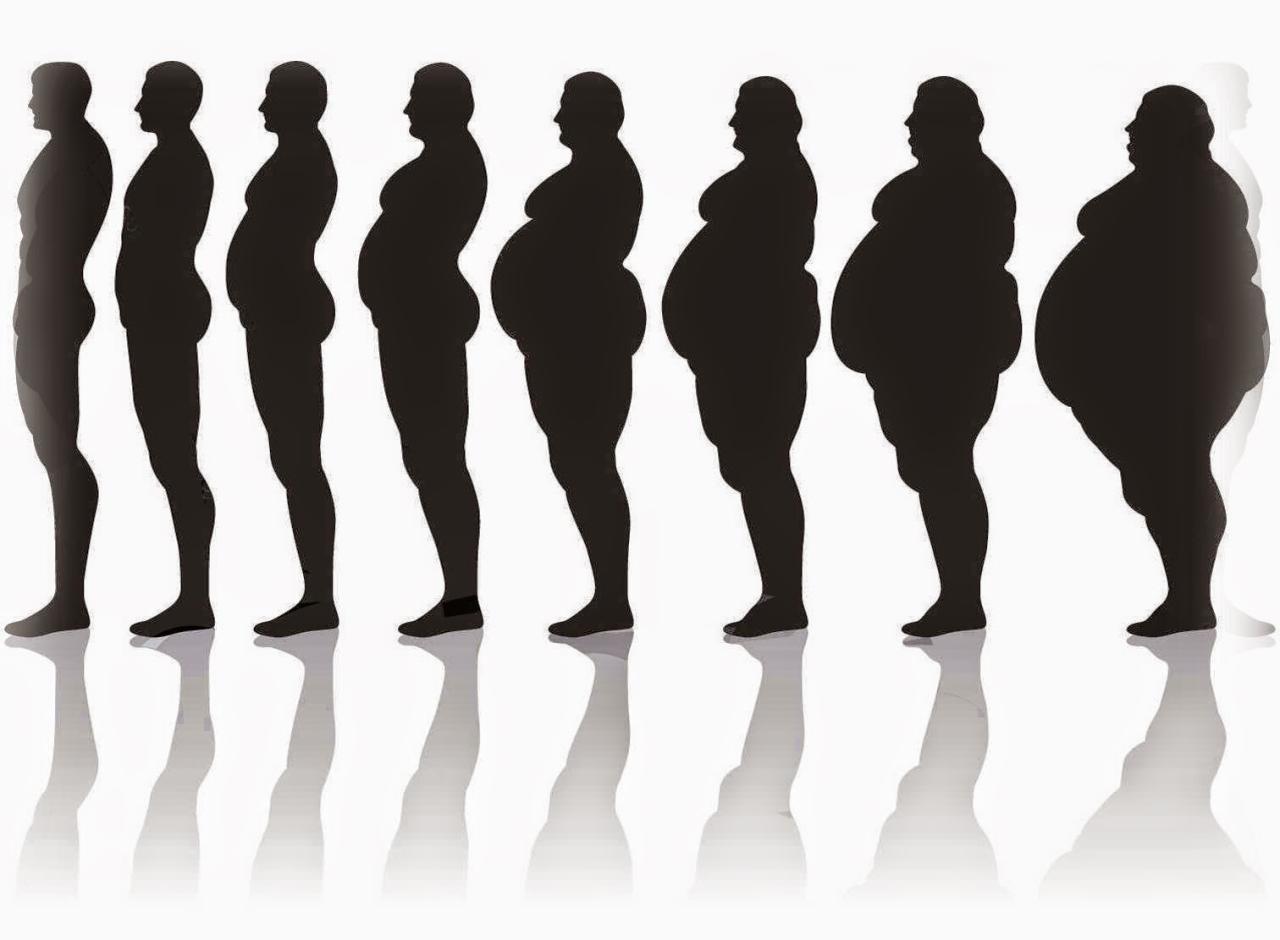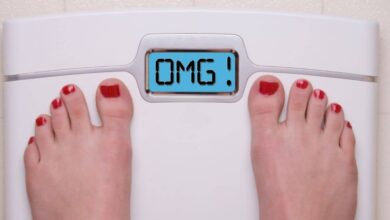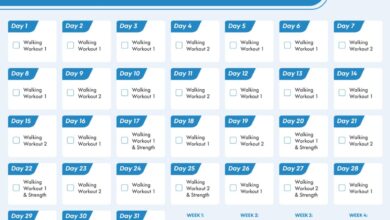
Weight Loss Tips for Men: A Guide to Getting Leaner
Weight loss tips for men often focus on the need to bulk up, but the truth is that shedding pounds can be just as important for men as it is for women. It’s about feeling healthier, stronger, and more confident in your own skin.
While the journey might seem daunting, it doesn’t have to be a struggle. This guide breaks down the essential elements of weight loss for men, offering practical tips and strategies to help you reach your goals.
From understanding the unique challenges men face to creating a sustainable lifestyle, we’ll explore everything from nutrition and exercise to stress management and the importance of seeking professional guidance. We’ll also address common misconceptions and provide realistic advice for long-term success.
Understanding Weight Loss for Men

Losing weight is a common goal for many people, but men often face unique challenges in their weight loss journey. Understanding these challenges and the physiological differences between men and women can be crucial for success.
Physiological Differences
Men and women have different hormonal profiles and body compositions, which can affect weight loss. For instance, men generally have more muscle mass and a higher percentage of testosterone, which can make it easier to build muscle and burn calories.
However, men also tend to have higher levels of visceral fat, the dangerous type of fat that surrounds organs.
Common Misconceptions
There are several common misconceptions about weight loss for men. One common misconception is that men can “bulk up” and eat whatever they want because they have a higher metabolism. This is not true. While men may have a higher resting metabolic rate, it does not mean they can eat more calories without gaining weight.
Another misconception is that men should focus solely on weight lifting and ignore cardio. While strength training is important for building muscle and boosting metabolism, cardio is essential for burning calories and improving cardiovascular health.
Exercise for Weight Loss

Exercise is a crucial component of weight loss for men, playing a vital role in burning calories, building muscle mass, and improving overall health. It complements a healthy diet, enhances metabolism, and boosts energy levels.
One of the most important weight loss tips for men is to prioritize protein intake. It helps keep you feeling full and satisfied, which can be crucial for managing cravings and sticking to your diet. A great way to get your protein fix is with a delicious and filling high protein shrimp burrito bowl.
This tasty meal can be customized to your liking and is packed with protein and healthy nutrients, making it a perfect choice for men looking to shed pounds.
Types of Exercise for Weight Loss
Different types of exercise contribute to weight loss in unique ways. Here’s a breakdown of the benefits of each:
- Cardiovascular Exercise:This type of exercise, also known as aerobic exercise, elevates your heart rate and improves cardiovascular health. Examples include running, swimming, cycling, and dancing. Cardiovascular exercise is highly effective in burning calories and improving your body’s ability to use oxygen efficiently.
Losing weight can be a challenge, especially for men who often crave hearty meals. While you might be tempted to skip breakfast, a balanced and protein-rich option like a bacon ham egg wrap can actually help keep you feeling full and satisfied throughout the morning, preventing those mid-day cravings that can derail your weight loss goals.
- Strength Training:Strength training involves using resistance to build muscle mass. It helps increase metabolism, improve bone density, and enhance strength. Examples include weightlifting, bodyweight exercises, and resistance band training. Building muscle mass increases your resting metabolic rate, meaning you burn more calories even when at rest.
- High-Intensity Interval Training (HIIT):HIIT involves short bursts of intense exercise followed by brief recovery periods. This type of training is highly effective in burning calories and improving cardiovascular fitness. Examples include sprinting, burpees, and jumping jacks.
Recommended Exercises for Different Muscle Groups
Targeting different muscle groups is essential for balanced development and overall fitness. Here’s a list of exercises for each major muscle group:
- Chest:Push-ups, bench press, dumbbell flyes
- Back:Pull-ups, rows, lat pulldowns
- Shoulders:Overhead press, lateral raises, front raises
- Legs:Squats, lunges, deadlifts, calf raises
- Arms:Bicep curls, tricep extensions, hammer curls
- Core:Plank, crunches, leg raises
Sample Weekly Workout Routine
This sample workout routine incorporates cardio, strength training, and HIIT, aiming for a balanced approach to weight loss. Remember to consult a healthcare professional before starting any new exercise program.
| Day | Workout | Duration |
|---|---|---|
| Monday | Strength Training (Chest, Back, Shoulders) | 45-60 minutes |
| Tuesday | Cardio (Running, Swimming, Cycling) | 30-45 minutes |
| Wednesday | Rest or Light Activity (Yoga, Stretching) | – |
| Thursday | Strength Training (Legs, Arms, Core) | 45-60 minutes |
| Friday | HIIT (Sprints, Burpees, Jumping Jacks) | 20-30 minutes |
| Saturday | Rest or Active Recovery (Walking, Hiking) | – |
| Sunday | Rest | – |
Consistency and Progress Tracking
Consistency is key to achieving and maintaining weight loss through exercise. Aim for at least 150 minutes of moderate-intensity cardio or 75 minutes of vigorous-intensity cardio per week. Track your progress through weight, body fat percentage, and measurements to monitor your progress and make adjustments as needed.
Staying Motivated and Overcoming Plateaus
Staying motivated can be challenging, especially when facing plateaus. Here are some tips to overcome these hurdles:
- Set Realistic Goals:Avoid setting unrealistic goals that can lead to discouragement. Start with achievable targets and gradually increase the intensity or duration of your workouts.
- Find an Exercise Buddy:Having a workout partner can provide support, motivation, and accountability.
- Mix Up Your Routine:Avoid boredom by incorporating different exercises and activities into your routine. Try new classes, explore different outdoor activities, or switch up your strength training exercises.
- Reward Yourself:Celebrate your milestones and achievements with non-food rewards. This can help maintain motivation and create a positive association with exercise.
Lifestyle Changes for Weight Loss
Lifestyle changes play a crucial role in achieving sustainable weight loss. By adopting healthier habits, men can create a supportive environment for weight management and overall well-being.
Improving Sleep Quality
Getting enough sleep is essential for weight loss. When you’re sleep-deprived, your body produces more of the stress hormone cortisol, which can lead to increased appetite and cravings for unhealthy foods. Aim for 7-9 hours of quality sleep each night.
- Establish a regular sleep schedule, going to bed and waking up around the same time each day, even on weekends.
- Create a relaxing bedtime routine that signals to your body it’s time to wind down. This could include taking a warm bath, reading a book, or listening to calming music.
- Make sure your bedroom is dark, quiet, and cool.
- Avoid caffeine and alcohol before bed.
- Limit screen time before bed, as the blue light emitted from electronic devices can interfere with sleep.
Managing Stress
Stress can also contribute to weight gain by increasing cortisol levels and leading to unhealthy eating habits. Effective stress management techniques are essential for successful weight loss.
- Engage in regular physical activity. Exercise releases endorphins, which have mood-boosting effects and can help reduce stress levels.
- Practice relaxation techniques such as deep breathing, meditation, or yoga.
- Spend time in nature. Being outdoors can have a calming effect on the mind and body.
- Connect with loved ones. Social support can help buffer the effects of stress.
- Seek professional help if needed. A therapist can provide guidance and coping strategies for managing stress.
Managing Portion Sizes and Mindful Eating, Weight loss tips for men
Mindful eating is a practice that involves paying attention to your food and eating experience. This can help you eat less and feel more satisfied with your meals.
- Eat slowly and savor each bite. This gives your brain time to register fullness, which can prevent overeating.
- Be aware of your hunger and fullness cues. Don’t eat when you’re not truly hungry, and stop eating when you’re comfortably full.
- Use smaller plates and bowls. This can help you control portion sizes without feeling deprived.
- Avoid distractions while eating. Turn off the TV, put away your phone, and focus on your meal.
Hydration
Water plays a crucial role in weight loss by helping you feel full, boosting your metabolism, and aiding in the breakdown of fat.
One of the best ways to lose weight is to focus on healthy, filling meals that keep you satisfied. A great option is a hearty bowl of butternut squash black bean chili recipe which is packed with protein, fiber, and nutrients, keeping you full and energized throughout the day.
And remember, along with healthy eating, regular exercise is key to reaching your weight loss goals.
- Aim to drink at least 8 glasses of water per day. You may need more if you’re active or live in a hot climate.
- Carry a reusable water bottle with you and sip on it throughout the day.
- Drink water before meals. This can help you feel fuller and eat less.
Maintaining Weight Loss: Weight Loss Tips For Men
Congratulations on achieving your weight loss goals! Now, the real challenge begins: maintaining your hard-earned progress. Weight loss isn’t a temporary fix; it’s a lifestyle change. This section will explore strategies to prevent weight regain and ensure lasting success.
Preventing Weight Regain
Maintaining weight loss is crucial to reap the long-term benefits of your efforts. The key is to avoid falling back into old habits that led to weight gain in the first place. Here are some proven strategies to prevent weight regain:
- Gradual Weight Loss:Rapid weight loss often leads to a rapid regain. Aim for a sustainable weight loss of 1-2 pounds per week. This allows your body to adjust gradually, making it easier to maintain the loss.
- Calorie Deficit:While you might have achieved your weight loss goal, it’s essential to maintain a slight calorie deficit to prevent weight gain. This doesn’t mean starving yourself; it’s about making mindful food choices and staying active.
- Regular Exercise:Exercise is not only about burning calories but also about building muscle mass, which helps boost metabolism and burn more calories even at rest. Aim for at least 150 minutes of moderate-intensity exercise or 75 minutes of vigorous-intensity exercise per week.
- Monitoring Progress:Regularly weigh yourself and track your food intake to identify potential weight gain early on. This allows you to make adjustments to your diet or exercise routine before the weight creeps back up.
Long-Term Lifestyle Changes
Sustained weight management requires a commitment to long-term lifestyle changes. These changes are not just about weight loss; they’re about improving overall health and well-being. Here are some key aspects:
- Mindful Eating:Instead of restricting certain foods, focus on making healthier choices most of the time. This involves being mindful of portion sizes, choosing nutrient-rich foods, and listening to your body’s hunger and fullness cues.
- Healthy Habits:Incorporate healthy habits into your daily routine. This could include cooking more meals at home, staying hydrated, getting enough sleep, and managing stress effectively.
- Social Support:Surround yourself with people who support your healthy lifestyle choices. Join a fitness group, connect with friends who are also working towards weight management goals, or seek guidance from a registered dietitian or a certified personal trainer.
Incorporating Physical Activity
Regular physical activity is crucial for weight maintenance and overall health. Here are some tips for incorporating exercise into your daily life:
- Find Activities You Enjoy:Choose activities that you find enjoyable, as this will make it more likely that you’ll stick with them. This could include walking, running, swimming, dancing, or team sports.
- Make it a Habit:Schedule time for exercise in your daily routine, just like you would schedule any other important appointment. This helps create consistency and makes it easier to prioritize physical activity.
- Vary Your Workouts:Mix up your workouts to prevent boredom and keep your body challenged. Try different types of exercise, such as cardio, strength training, and flexibility exercises.
- Incorporate Movement Throughout the Day:Look for opportunities to be more active throughout the day. This could include taking the stairs instead of the elevator, walking during your lunch break, or doing some stretching exercises while watching TV.
Dealing with Setbacks and Maintaining Motivation
Setbacks are inevitable on any weight management journey. It’s important to learn from them and stay motivated. Here are some strategies:
- Be Kind to Yourself:Don’t beat yourself up if you slip up. It’s a normal part of the process. Forgive yourself and get back on track as soon as possible.
- Focus on the Positives:Celebrate your successes, no matter how small. Acknowledge the progress you’ve made and the benefits you’re experiencing. This will help you stay motivated and focused on your goals.
- Seek Support:Talk to a trusted friend, family member, or therapist about your struggles. Having a support system can make a significant difference in your ability to stay motivated and on track.
- Reassess Your Goals:If you find yourself struggling, it might be helpful to reassess your goals. Are they realistic and achievable? Are you setting yourself up for success? Adjusting your goals can help you stay motivated and prevent feelings of overwhelm.
Ultimate Conclusion
Remember, weight loss is a personal journey, and there’s no one-size-fits-all approach. By embracing the strategies Artikeld in this guide, you can equip yourself with the knowledge and tools to achieve your weight loss goals. It’s about making informed choices, building healthy habits, and celebrating every step of the way.
So, take a deep breath, commit to the process, and embark on a transformative journey toward a healthier, happier you.






